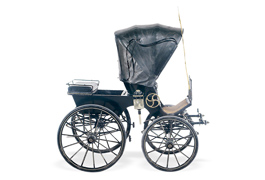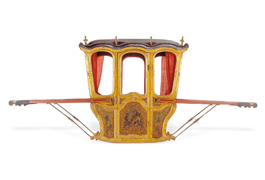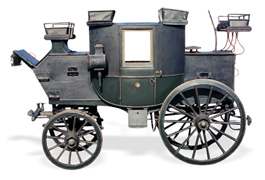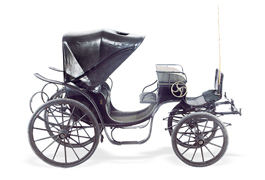
The name Phaeton comes from Greek mythology in which Phaeton son of the Sun god, Helios, was driving his father’s car. The first Phaeton emerged in the second half of the 18th century and there are number of different models. Essentially it is a four-wheel vehicle drawn by a pair of horses lead by its owner. It can be used in the city or in the country. Its body is open, and seats are parallel to the axles. The main seat is that of the driver which has a folding hood. There is a smaller seat in the car to seat the servant to hold the horses while the owner stepped off.





